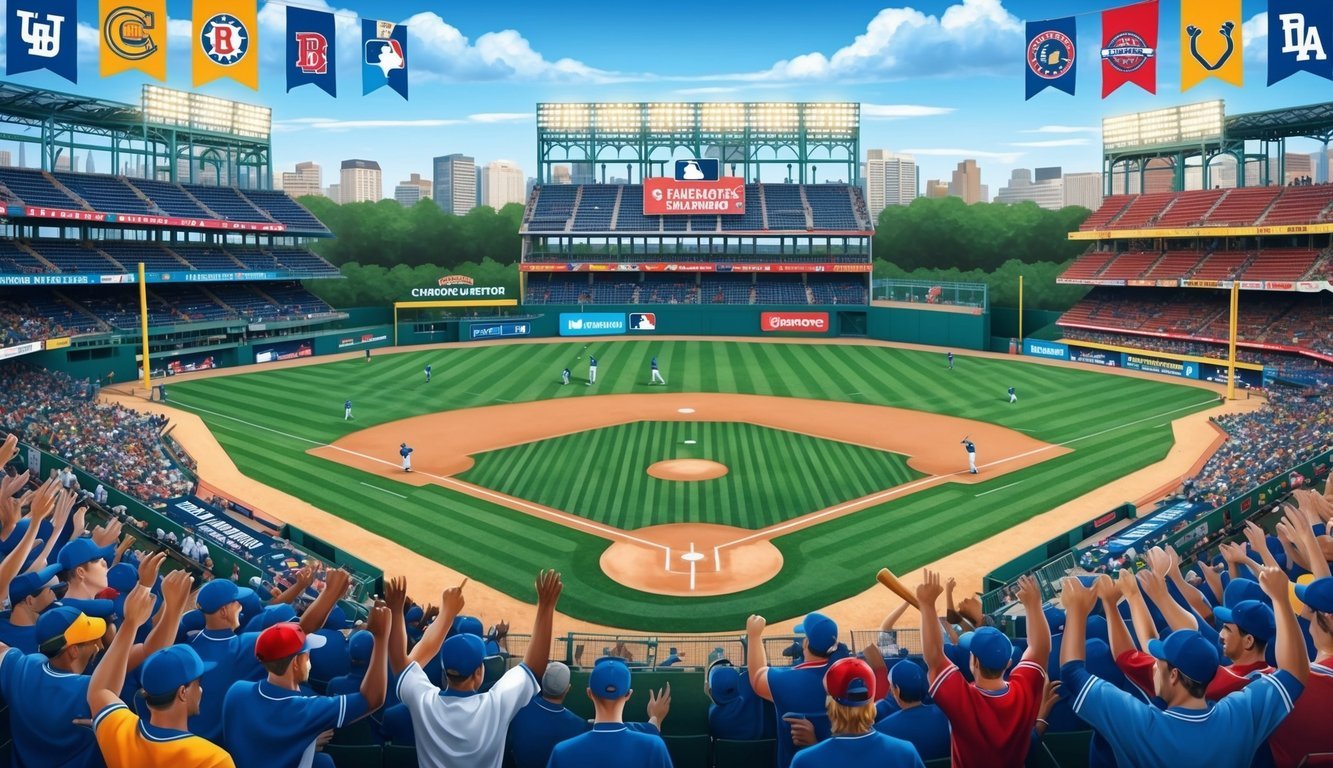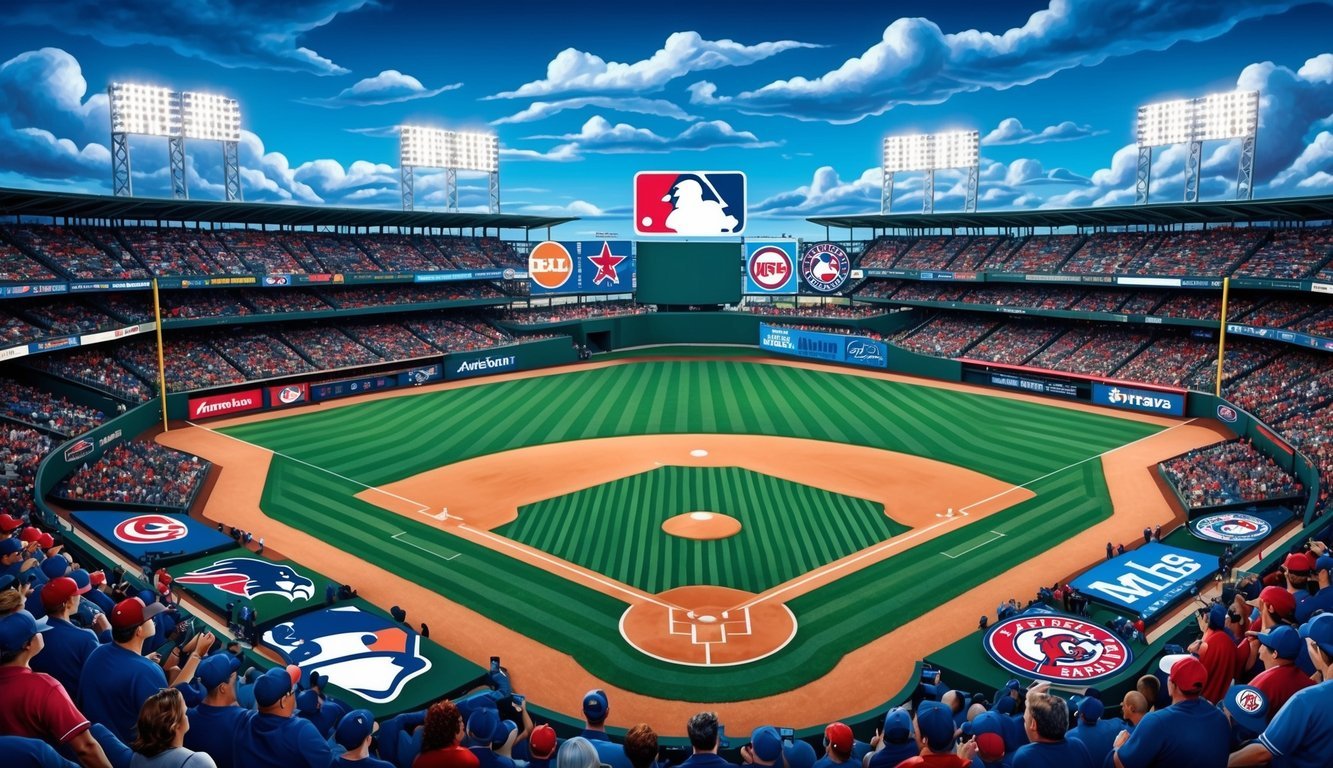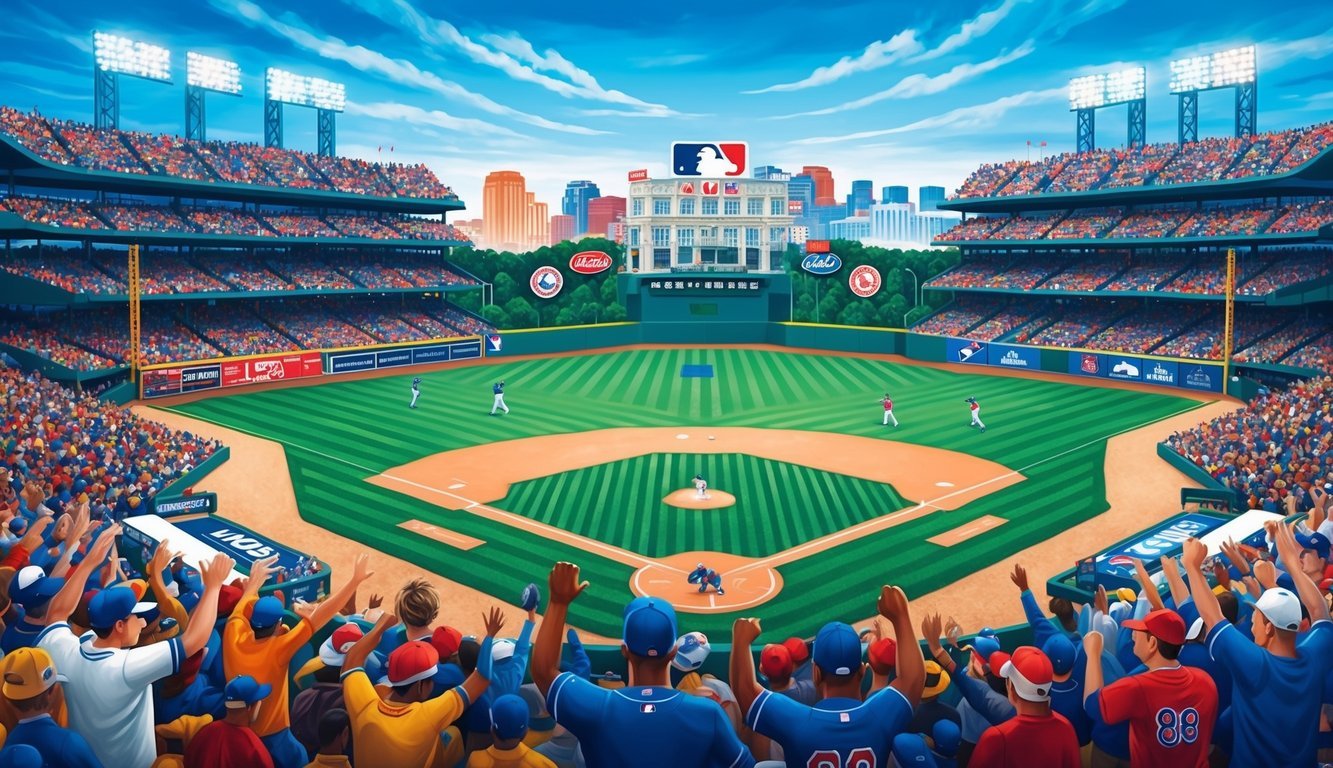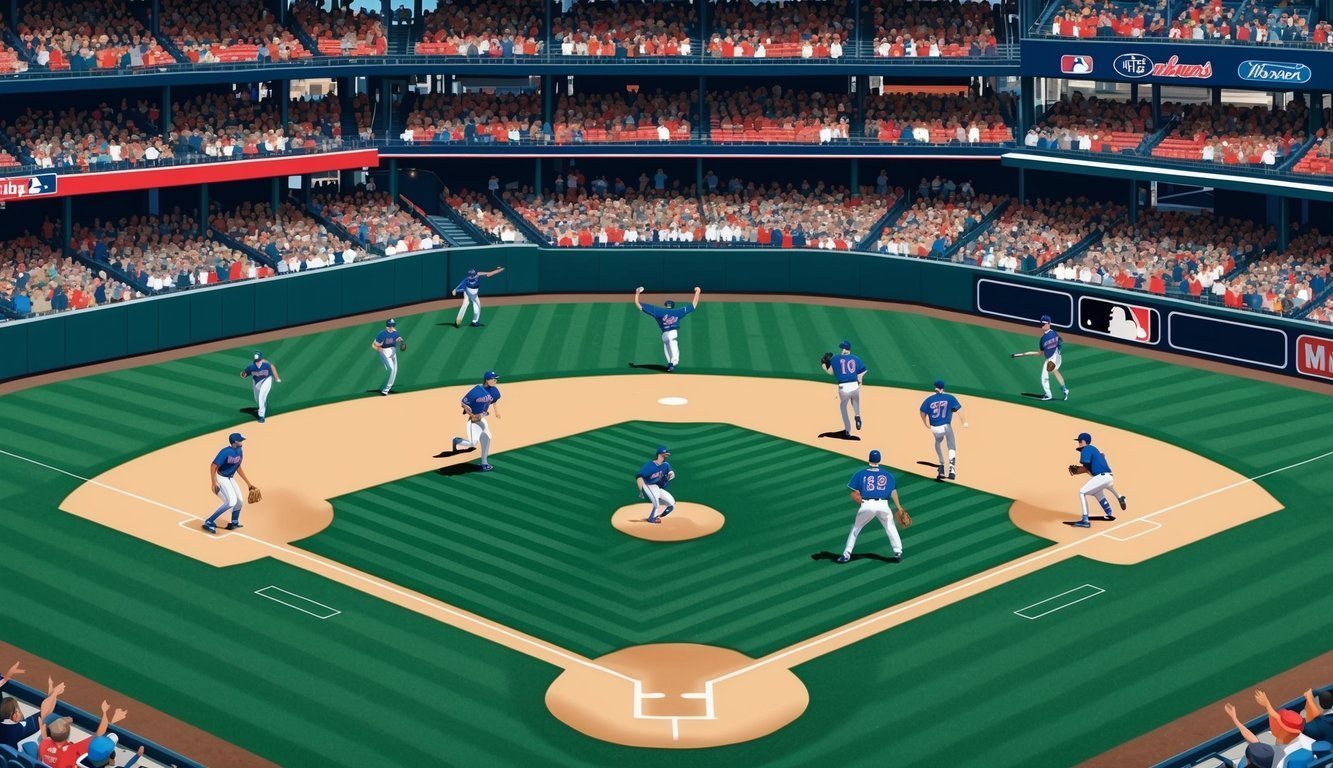Major League Baseball (MLB) is home to 30 teams spread across the United States and Canada.
These teams compete annually for the coveted World Series championship.
The MLB is divided into two leagues – the American League and National League – each with three divisions: East, Central, and West.
Baseball fans have plenty to cheer about with teams like the New York Yankees, Boston Red Sox, Los Angeles Dodgers, and Chicago Cubs capturing hearts and imaginations.
Each team has its own unique history, traditions, and loyal fan base.
From historic ballparks like Fenway Park and Wrigley Field to modern marvels like Truist Park, MLB stadiums offer unforgettable experiences.
The 2024 MLB season is in full swing, with teams vying for playoff spots and division titles.
Fans can follow their favorite teams’ progress through official MLB standings and websites.
Whether attending games in person or watching from home, baseball enthusiasts have numerous ways to connect with America’s pastime and support their beloved teams.
History of Major League Baseball
Major League Baseball has a rich history spanning nearly 150 years.
The sport evolved from amateur clubs to a professional organization that captivates millions of fans today.
The Founding Era: 1876-1900
In 1876, the National League (NL) was formed, marking the birth of professional baseball.
The Boston Red Stockings (now Atlanta Braves) were among the founding teams.
Early franchises included the New York Giants and Brooklyn Dodgers.
The NL faced competition from rival leagues but emerged as the dominant organization.
Teams played in wooden ballparks, and games often featured high-scoring affairs.
Players used heavier bats and softer balls compared to modern equipment.
Rule changes shaped the game during this period.
The pitcher’s mound was moved to its current distance of 60 feet 6 inches from home plate in 1893.
Expansion and Evolution: 1901-Present
The American League (AL) formed in 1901, creating a two-league system.
The Philadelphia Athletics and Boston Americans (now Red Sox) were original AL teams.
The first World Series was played in 1903, pitting the best teams from each league.
MLB expanded several times, adding new franchises and relocating others.
The Boston Braves moved to Milwaukee in 1953, then to Atlanta in 1966.
The Brooklyn Dodgers and New York Giants relocated to California in 1958.
The Montreal Expos joined in 1969 but later became the Washington Nationals.
Other short-lived franchises included the Seattle Pilots and St. Louis Browns.
Integration began in 1947 when Jackie Robinson broke the color barrier.
This opened doors for talented players of all backgrounds to compete at the highest level.
Teams and Their Cities
Major League Baseball teams are spread across various cities in the United States and Canada.
These franchises represent their home cities, creating strong local fan bases and rivalries.
Each team has its own unique history and traditions, which contribute to the vibrant culture of the sport.
Fans often take pride in their team’s achievements and the sense of community it fosters.
For those looking to explore the league’s franchises, the MLB teams listed alphabetically provide an easy way to familiarize oneself with the different organizations across North America.
American League Teams
The American League features 15 teams in diverse locations.
The New York Yankees, based in the Bronx, are one of baseball’s most iconic franchises.
The Boston Red Sox play at historic Fenway Park, while the Toronto Blue Jays represent Canada’s largest city.
In the Midwest, the Chicago White Sox and Cleveland Guardians compete in the AL Central.
The Detroit Tigers call Comerica Park home.
The Minnesota Twins play in Minneapolis, and the Kansas City Royals represent Missouri.
On the West Coast, the Los Angeles Angels and Oakland Athletics are California’s AL teams.
The Seattle Mariners play in the Pacific Northwest.
In Texas, the Houston Astros and Texas Rangers draw passionate fans.
National League Teams
The National League also boasts 15 teams across North America.
The Chicago Cubs play at Wrigley Field, while the St. Louis Cardinals represent Missouri.
The Milwaukee Brewers and Cincinnati Reds have loyal Midwest followings.
In the East, the Atlanta Braves, New York Mets, and Philadelphia Phillies vie for supremacy.
The Miami Marlins bring baseball to South Florida, and the Washington Nationals play in the nation’s capital.
The NL West features fierce California rivals: the Los Angeles Dodgers, San Diego Padres, and San Francisco Giants.
The Arizona Diamondbacks play in Phoenix, while the Colorado Rockies represent Denver.
Pittsburgh’s Pirates and San Diego’s Padres round out the league, each with their own unique ballparks and traditions.
League Structure and Divisions

Major League Baseball is organized into two leagues and six divisions.
This structure creates exciting rivalries and balanced competition across the sport.
American League Breakdown
The American League (AL) consists of 15 teams split into three divisions: East, Central, and West.
Each division has five teams.
AL East: Boston Red Sox, New York Yankees, Tampa Bay Rays, Toronto Blue Jays, Baltimore Orioles
AL Central: Chicago White Sox, Cleveland Guardians, Detroit Tigers, Kansas City Royals, Minnesota Twins
AL West: Houston Astros, Los Angeles Angels, Oakland Athletics, Seattle Mariners, Texas Rangers
This division setup fosters intense regional rivalries and creates a balanced schedule for teams.
National League Breakdown
The National League (NL) mirrors the AL with 15 teams divided into three divisions: East, Central, and West.
NL East: Atlanta Braves, Miami Marlins, New York Mets, Philadelphia Phillies, Washington Nationals
NL Central: Chicago Cubs, Cincinnati Reds, Milwaukee Brewers, Pittsburgh Pirates, St. Louis Cardinals
NL West: Arizona Diamondbacks, Colorado Rockies, Los Angeles Dodgers, San Diego Padres, San Francisco Giants
Like the AL, this structure promotes competitive balance and geographic rivalries.
Teams play more games within their division, creating exciting pennant races each season.
Season Structure and Key Events

The MLB season follows a structured format with distinct phases.
Teams compete through a lengthy regular season before the top performers advance to an exciting postseason culminating in the World Series championship.
Regular Season
The MLB regular season consists of 162 games for each team.
This marathon stretches from late March or early April to late September or early October.
Teams face divisional rivals frequently while also playing against other teams in their league and the opposite league.
Home and away games are typically split evenly.
The schedule includes series of 2-4 games against the same opponent before moving on to the next.
Teams often have one or two off-days per week for travel and rest.
Highlights of the regular season include Opening Day, the All-Star Game in July, and heated pennant races as teams jockey for playoff positions in the final weeks.
Postseason
After the regular season, 12 teams advance to the MLB postseason – six from each league.
This includes three division winners and three wild card teams per league.
The expanded format, introduced in recent years, has added excitement and opportunity for more teams to compete for the championship.
The postseason begins with the Wild Card Series, followed by the Division Series and League Championship Series.
Each round is played in a best-of-five or best-of-seven format.
Tension builds as the field narrows and every pitch becomes crucial.
Teams with better regular season records often secure home-field advantage, adding to the drama of October baseball.
World Series
The World Series is the pinnacle of the MLB season.
This best-of-seven championship series pits the winners of the American League and National League against each other.
The event typically takes place in late October, sometimes stretching into early November.
Games alternate between the home stadiums of both teams.
The league that wins the All-Star Game earns home-field advantage for its champion.
World Series games are prime-time events, drawing massive TV audiences and creating unforgettable moments.
The winning team claims the coveted Commissioner’s Trophy and the title of World Series Champions, cementing their place in baseball history.
MLB Culture and Impact

Baseball’s deep-rooted influence extends far beyond the diamond, shaping American society and reaching global audiences.
The sport’s rich history and traditions have made it a cultural touchstone.
Role of Baseball in American Society
Baseball has long been considered America’s pastime, intertwining with the nation’s social fabric.
The sport brings communities together, fostering a sense of belonging and shared experience.
Veterans often throw ceremonial first pitches, honoring their service.
Labor unions have played a significant role in baseball’s history, fighting for players’ rights and fair compensation.
Batting average remains a key statistic for fans and analysts alike.
CBS Sports provides extensive coverage, keeping enthusiasts informed and engaged.
The game’s pace allows for social interaction, making it a popular choice for family outings and corporate events.
Baseball stadiums serve as community hubs, hosting concerts and other gatherings.
Baseball’s Global Influence
MLB’s reach extends well beyond U.S. borders.
It has a growing international fanbase and players from diverse backgrounds.
The World Baseball Classic showcases the sport’s global appeal.
Countries like Japan, South Korea, and the Dominican Republic have embraced baseball.
They’ve developed their own professional leagues.
MLB teams scout talent worldwide, bringing exciting new players to the big leagues.
International players often become ambassadors for the sport.
They inspire youth in their home countries to pursue baseball dreams.
MLB’s efforts to promote the game globally include youth clinics and exhibition games in various countries.
The sport’s popularity has led to the creation of baseball academies in Latin America and Asia.
These academies nurture young talent and provide educational opportunities.
